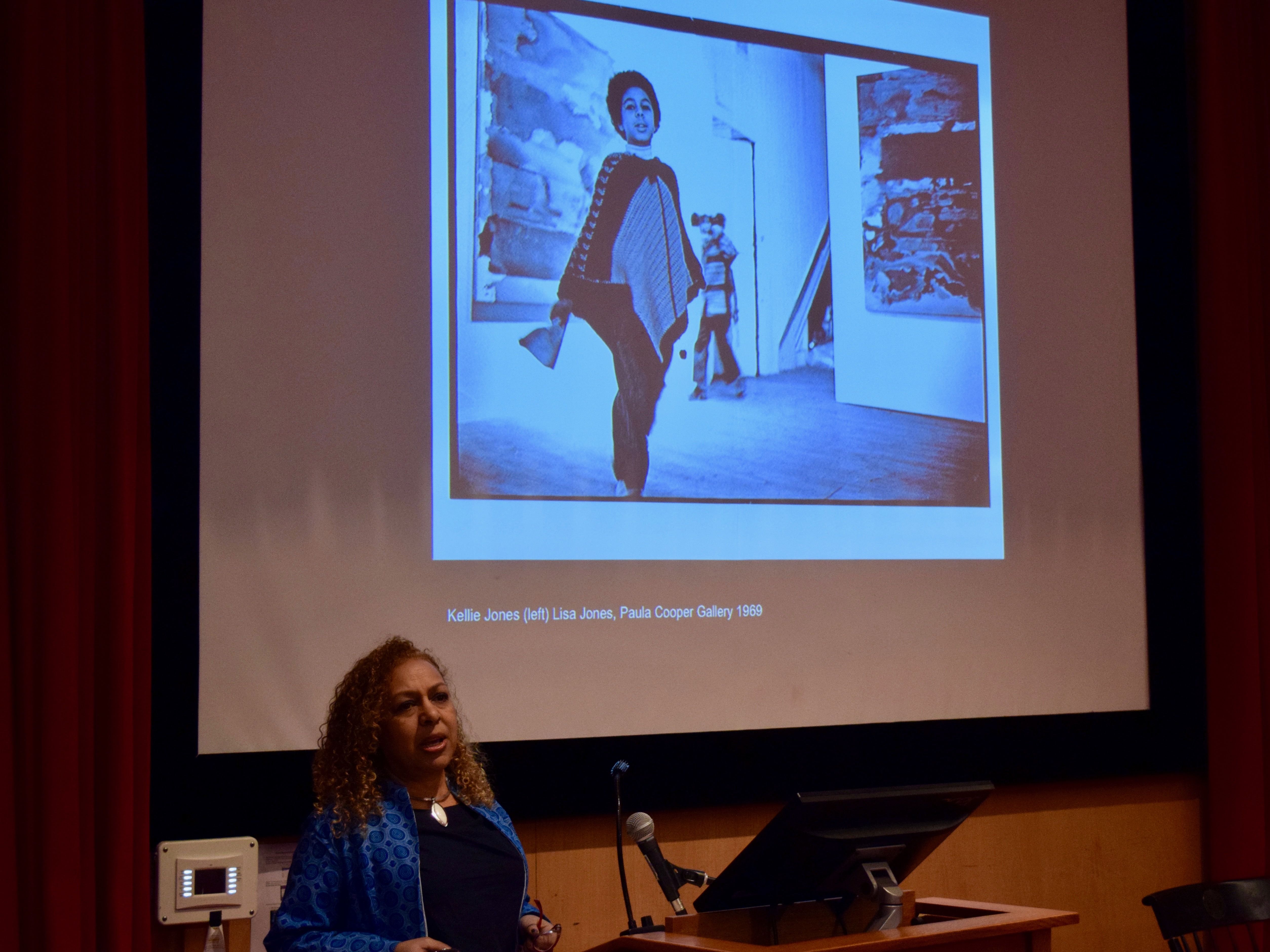

Amherst alumna and MacArthur Fellow Dr. Kellie Jones ’81 spoke about her career and upcoming book “South of Pico: African American Artists in Los Angeles in the 1960s and 1970s” in a talk titled “EyeMinded: Living and Writing Contemporary Art” on Thursday, Feb. 23. In her talk, Jones outlined her efforts to bring the work of black and other marginalized artists to the spotlight and reveal the “hidden history of black people everywhere.”
Professor of Art and History of Art Nicola Courtright introduced Jones, calling her “our current-day Vasari ... who created the canon of art history during the Renaissance.” Courtright pinpointed Jones’ unique perspective on the role of race in art as a major reason for inviting her back to Amherst.
“After Amherst Uprising, I talked to many students of color,” Courtright said. “I thought that she would be a very important voice for understanding and hope for students who were feeling very bummed out about what it was like to be black in our society and to be black at Amherst.” She added that she wanted Jones to speak not only to students of color, but to “any students” in order to foster a more inclusive community.
The daughter of two civil rights activists, Jones grew up in New York and went on to complete an interdisciplinary major at Amherst. She later received her Ph.D. in art history at Yale. Today, she is a professor at Columbia University. Jones has also continued to work as a guest curator in cities such as São Paolo, Johannesburg, New York and Los Angeles.
In 2016, Jones received a MacArthur Fellowship grant for her curation of contemporary art of the African diaspora. The MacArthur Foundation recognized Jones for specifically seeking out artists from communities that descend from the historical movement of people from Africa, particularly to the Americas.
Jones spoke to the importance of cultural exchange and communication in the arts. She explained that in her own work, she makes a point of including artists of all races, even if that specific exhibit is about the African-American experience.
She pointed to her own experiences as a curator to show the far-reaching impact of “the dialogue that people have with black culture.”
“Even though people are telling you this is marginal,” she said, the huge reactions to her own exhibits and the success of the artists she has placed in the spotlight demonstrate an interest in the art of the African diaspora beyond the black community.
“I don’t think 40,000 people coming [to see it] means it’s marginal,” said Jones about the crowds one of her first exhibits drew. “I think it means people want to see this.”
Jones offered current Amherst students advice as they navigate this “place of possibility.”
“In being here and having the great opportunity to go to this school, studying and learning, you also have a responsibility to give something back, because it’s given something to you,” she reminded students.
“I think a lot of us, especially those of us in the arts and arts scholarship, kind of wonder how a liberal arts education is going to pan out,” said Jamie Sandel ’17. “[Jones] kind of occupies this amazing space where she’s contributing academically ... but she’s also making a huge impact in the practical arts world. And also accomplishing a lot of things with an activist impact, all at once, which is very encouraging for a liberal arts student.”
At the end of her talk, Jones focused on visual art as a means of activism and spoke about how the present is “a moment of greater activism for artists in many ways.” She also suggested that marginalized artists are more free to express themselves than ever, as LGBT issues become more visible and people become more exposed to black art.
“There’s a much wider idea of what black can be, what black is,” she said.
Jones also praised the role of social media in promoting new artists’ work and encouraged artists to keep sharing. “The way artists think … is something the world needs, clearly,” she said.
Ultimately, Jones left students with a message of hope. “Activism in art looks different in different times,” she said. “But it’s there — it continues. It may take years … but guess what? It actually happens.”